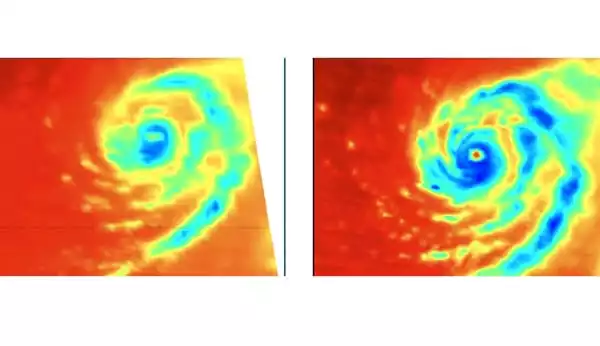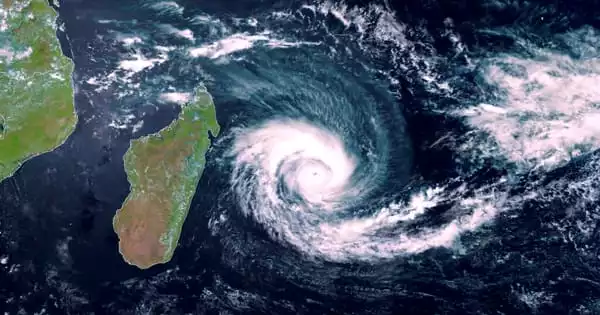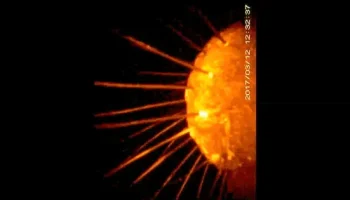NASA plans to launch the first two of six small satellites no later than June 12 to analyze the creation and evolution of tropical cyclones virtually every hour—roughly four to six times faster than present satellites can. NASA’s Time-Resolved Observations of Precipitation Structure and Storm Intensity with a Constellation of Smallsats (TROPICS) project is launching the first of three CubeSats. The remaining satellites will be sent into orbit during the course of this year in two separate launches. The TROPICS satellites will be dispersed over three orbital planes if they are successful, allowing them to cover more of the globe more regularly.
“TROPICS will provide us with frequent views of tropical cyclones, giving us insight into their formation, intensification, and interactions with their environment, as well as critical data for storm monitoring and forecasting,” said Scott Braun, a research meteorologist at NASA’s Goddard Space Flight Center in Greenbelt, Maryland.
Weather satellites in low-Earth orbit, such as NOAA-20, the joint NASA-National Oceanic and Atmospheric Administration Suomi NPP satellite, and others from NASA’s partners, return to a storm every four to six hours. “As a result, we’re losing a lot of what’s going on in the storm,” Bill Blackwell, the TROPICS mission’s chief investigator and a researcher at the Massachusetts Institute of Technology Lincoln Laboratory in Lexington, Massachusetts, noted. The TROPICS constellation will provide scientists with more regular updates, supplementing data acquired by existing low-Earth orbit weather satellites and allowing scientists to track storms from start to finish.
The six satellites will be launched in three pairs into three slightly distinct low-Earth orbits, all about 30 degrees above the equator. This will maximize the amount of time the satellites spend passing over the part of the Earth where most tropical cyclones form—a horizontal band stretching roughly between 38 degrees north and south latitudes, roughly from the Mid-Atlantic region of the United States to the southern coast of Australia. Every hour or so, one of the TROPICS satellites should pass over any given place within that band.
Planck’s Law states that all stuff, including water vapor, oxygen, and clouds in the atmosphere, emits energy as heat and light. Each TROPICS satellite carries a microwave radiometer device that detects these atmospheric emissions. The sensors take passive observations in the same way as the Advanced Technology Microwave Sounder (ATMS) instruments on existing low-Earth orbit weather satellites do.

Microwave frequencies spanning from 90 to 205 gigahertz are measured by the microwave radiometer aboard each TROPICS satellite. These frequencies provide information to scientists about the storm’s temperature, precipitation, moisture, and other features. The TROPICS satellites can provide three-dimensional photographs of the cyclones’ environs because the quantity of heat and light—or radiance—at these frequencies emanates from various elevations. TROPICS’ frequencies are also particularly sensitive to ice and cloud properties, which will aid meteorologists in studying how tropical storms begin and intensify. TROPICS’ frequencies, on the other hand, are less sensitive to temperature and moisture underneath the clouds, which the ATMS sensors on the NOAA-20 and Suomi-NPP satellites excel at.
TROPICS data combined with current weather satellite data will aid scientists in refining their understanding of tropical cyclones.
“We’ll have far more frequent observations of tropical cyclones with the TROPICS constellation, and at wavelengths that can help us understand thermodynamic structure in the eye and in the storm environment,” Blackwell said.
The six TROPICS satellites will join the TROPICS Pathfinder satellite, a proof-of-concept CubeSat that launched in June 2021, if everything goes according to plan. Since then, the pathfinder has recorded photographs of Hurricane Ida over the United States, Cyclone Batsirai over Madagascar, and Super Typhoon Mindulle over eastern Japan. The TROPICS research team has also used the pathfinder satellite to fine-tune the satellites’ software and operational processes ahead of the constellation’s launch. Furthermore, the pathfinder has already been calibrated and will be used as a calibration reference for the remaining TROPICS satellites. The TROPICS CubeSats would be able to produce relevant data more quickly as a result of this.
“The TROPICS team is ecstatic to get the constellation up and running, especially given the success of the pathfinder,” Blackwell added.





